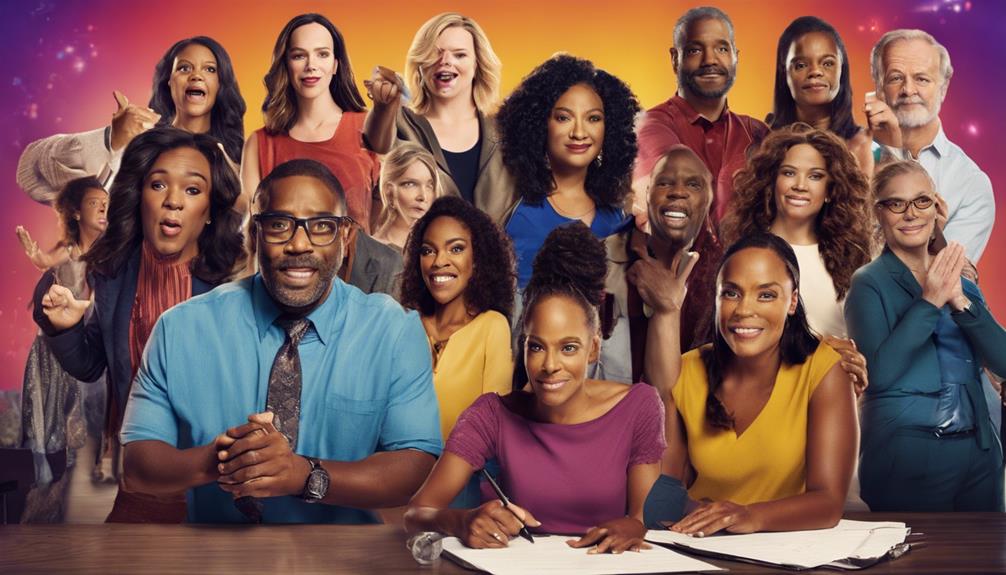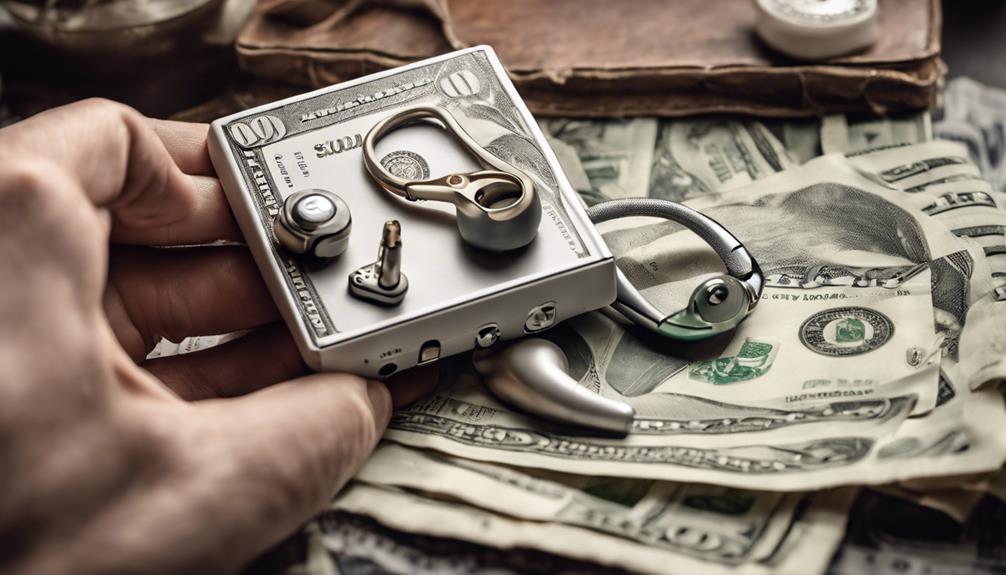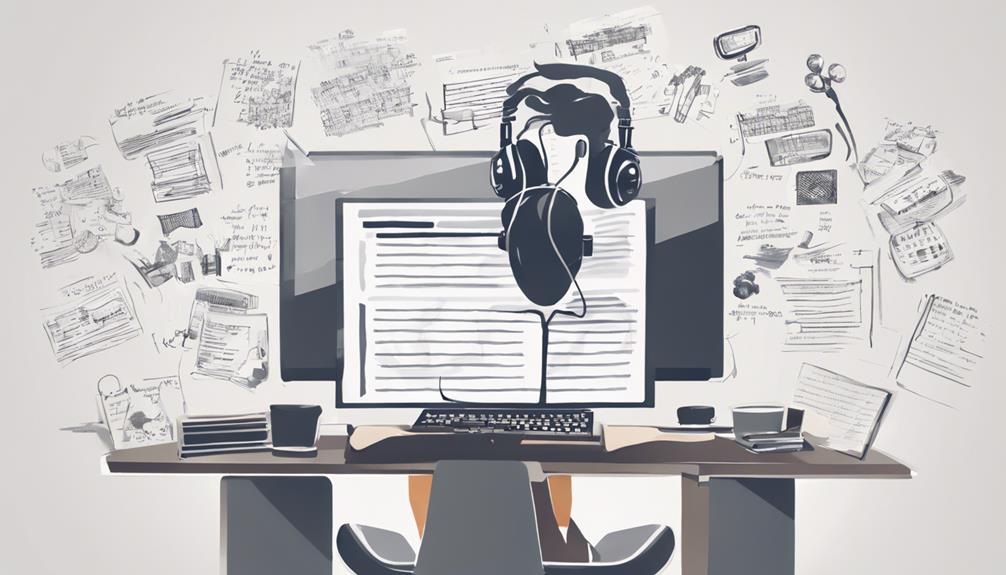When entering the world of dating a deaf person, consider communication as the bridge that connects two separate worlds.
It's like…
Key Takeaways
- Prioritize effective communication through lip-reading, sign language, and clear speech.
- Master sign language basics like fingerspelling and facial expressions for enhanced understanding.
- Show patience and consideration by repeating information and creating comfortable environments.
- Choose suitable date locations with good lighting, minimal noise, and accessibility for communication aids.
Importance of Communication
Effective communication with a deaf individual relies heavily on utilizing lip-reading and sign language. When conversing with a deaf person, maintaining eye contact and speaking clearly are essential. Lip-reading requires enunciating words properly and ensuring that your face is well-lit for better visibility. It's crucial to avoid covering your mouth or speaking too quickly, as this can impede the individual's ability to understand you through lip-reading. Additionally, being mindful of background noise and minimizing distractions can facilitate effective communication through lip-reading.
Incorporating gestures and facial expressions can also complement lip-reading and enhance the overall communication process. Non-verbal cues play a significant role in conveying emotions and intentions, making the interaction more engaging and comprehensible. By combining lip-reading with these visual cues, you can create a more holistic communication experience that bridges the gap between spoken language and sign language. Remember, patience and attentiveness are key when communicating with a deaf individual through lip-reading, fostering understanding and connection in the conversation.
Understanding Sign Language Basics

Understanding the fundamentals of sign language is pivotal for effective communication with deaf or hard of hearing individuals. Learning basic sign language involves mastering the alphabet and common phrases like greetings. Recognizing facial expressions and body language cues is crucial in understanding sign language basics. Fingerspelling, which spells out words letter by letter, is an essential component of sign language. Sign language utilizes hand movements, gestures, and facial expressions to convey meaning effectively. Basic sign language proficiency can greatly enhance communication with a deaf or hard of hearing individual.
| Sign Language Basics | |
|---|---|
| Mastering alphabet | Recognizing facial expressions |
| Common phrases | Understanding body language cues |
| Fingerspelling | Hand movements for meaning |
| Gestures | Enhancing communication |
| Facial expressions |
Patience in Interactions
Exercising patience in interactions with a deaf individual is paramount for fostering effective communication and building strong relationships.
It's essential to understand that communication with a deaf person may require more time and effort, but the rewards are significant.
Patience plays a crucial role in ensuring that both parties feel heard and respected.
Taking the time to repeat information, clarify messages, or wait for a response shows consideration for their communication needs and fosters a sense of inclusivity.
Choosing Suitable Date Locations

Transitioning from considerations of patience in interactions, selecting suitable date locations for outings with a deaf individual involves careful planning to ensure optimal communication and comfort.
When choosing a place to spend time together, opt for well-lit restaurants that offer good visibility for lipreading. These settings can make it easier for the deaf person to understand conversations and feel more engaged. Additionally, selecting locations with minimal background noise is essential for effective communication. Places with low noise levels create an environment where both individuals can interact without distractions or misunderstandings.
Outdoor settings can also be ideal for dates with a deaf partner, as natural lighting enhances visibility and promotes clearer communication. Furthermore, consider venues that provide closed captioning for movies or shows to enjoy entertainment together without barriers. Exploring places that offer easy access to sign language interpreters can further enhance communication during the date.
Clear and Open Communication
To ensure effective communication with a deaf individual, it's crucial to maintain eye contact and speak clearly to aid in lip-reading and understanding. This practice helps in fostering a strong connection and ensures that both parties feel engaged in the conversation.
Additionally, utilizing sign language or gestures can enhance communication and make interactions more dynamic and inclusive. It's essential to be patient and willing to repeat yourself when necessary, showing respect for the individual's efforts to understand.
Creating a comfortable and well-lit environment can significantly improve communication, making it easier for lip-reading and visual cues to be interpreted accurately. Encouraging open and honest communication establishes a foundation of trust and mutual understanding, strengthening the bond between you and your deaf partner.
Consideration During Intimacy

Navigating intimacy with a deaf partner involves thoughtful consideration to ensure comfort and respect for their needs, including being mindful of handling hearing devices during intimate moments. Touching hearing devices without permission can lead to discomfort or disrupt the moment.
It's crucial to openly communicate about preferences regarding hearing devices to create a comfortable experience for both partners. Establishing clear signals for communication in dark or intimate settings is essential to maintain understanding and avoid misunderstandings.
Respecting boundaries related to hearing devices fosters trust and comfort in the relationship. By being considerate of your partner's needs, you can ensure comfort and understanding during intimate interactions.
Encouraging Comfort and Confidence

Encouraging comfort and confidence in a relationship with a deaf partner involves fostering open communication about comfort levels and preferences. It's essential to create a safe and understanding environment where both partners feel free to express their needs and concerns.
Here are some key ways to promote comfort and confidence in communication:
- Encourage Open Communication: Regularly check in with your partner about how they're feeling and what they need to feel more comfortable in the relationship.
- Be Supportive: Show empathy and understanding towards any challenges your partner may face due to their deafness, and offer your support in finding solutions that work for both of you.
- Promote Confidence: Help your partner feel secure by being patient, respectful, and accommodating in your communication methods, allowing them to express themselves freely without fear of judgment.
Asking Questions and Seeking Clarification

When communicating with a deaf person, asking questions and seeking clarification plays a crucial role in fostering understanding and connection in the relationship. Asking questions not only shows interest but also promotes a deeper level of comprehension in conversations.
By seeking clarification, misunderstandings can be avoided, leading to more effective communication. It's essential to clarify information to demonstrate respect for the deaf individual's unique perspective and experiences.
Openly asking for explanations not only fosters a deeper connection but also promotes mutual learning within the relationship. Being curious and actively seeking clarification can enhance communication skills and strengthen the bond with a deaf partner.
Embracing a mindset of curiosity and openness in asking questions and seeking clarification can lead to more meaningful interactions and a stronger connection with your deaf partner.
Embracing Individuality and Authenticity

Let's cherish the unique perspectives and personal communication style of the deaf individual we're dating.
By encouraging open and authentic interactions, we can build a deeper connection based on mutual respect.
It's essential to focus on their individuality beyond their hearing loss to truly understand and appreciate who they are.
Embracing Unique Perspectives
Embracing individuality and authenticity in a relationship with a deaf person allows for a deeper connection and understanding between partners. When we embrace unique perspectives, we open doors to growth and empathy within the relationship. Here are some key points to consider:
- Valuing Diverse Experiences: Acknowledging and appreciating the different backgrounds and perspectives each partner brings to the relationship can lead to mutual respect and admiration.
- Fostering Open Communication: Encouraging open and honest communication without judgment creates a safe space for both partners to express themselves freely.
- Celebrating Differences: Embracing the differences in how we perceive the world can enrich the relationship, offering new insights and opportunities for personal development.
Honoring Personal Communication Style
Honoring each other's personal communication style fosters a deeper connection and understanding in a relationship with a deaf person. It is essential to embrace the unique communication styles and preferences of your date, respecting their individuality and authenticity in how they communicate. Avoid imposing your own communication norms on them, and instead, celebrate the diversity in communication methods within the deaf community. By adapting to their preferred mode of communication, you can create a more inclusive and harmonious relationship. To achieve this, consider the following table:
| Communication Style | Deaf Community |
|---|---|
| Sign Language | American Sign Language (ASL) |
| Lip-reading | Cued Speech |
| Written Communication | Texting or Writing |
| Gestures | Body Language |
| Assistive Technologies | Video Relay Services |
Building Trust and Respect

When dating a deaf person, we must prioritize building trust and respect by actively listening and showing reliability in communication. Understanding their perspective, respecting their boundaries, and being patient and empathetic are crucial in fostering a strong relationship.
Communication Is Key
Effective communication is the cornerstone of building trust and respect when dating a deaf person. In relationships with hard of hearing individuals, clear and attentive communication is vital to nurturing a strong connection. Here are some key points to consider:
- Active Listening: Show genuine interest by actively listening and engaging in conversations.
- Use of Visual Cues: Incorporate visual cues like gestures or facial expressions to enhance communication.
- Patience and Understanding: Be patient and understanding, allowing for effective communication to develop over time.
These practices not only facilitate smooth interactions but also demonstrate your commitment to understanding and respecting your partner's communication needs.
Understand Their Perspective
Understanding a deaf person's perspective in a relationship is crucial for building trust and respect. Acknowledging their unique communication needs is vital in fostering a deeper connection. By respecting their preferred communication methods, we can create a comfortable environment where both partners feel valued.
Actively listening and showing empathy are essential steps in building a strong foundation of trust. Prioritizing clear and open communication not only strengthens the bond but also promotes mutual understanding in the relationship.
It's through this understanding and respect for each other's perspectives that a solid and healthy relationship can be cultivated, enriching the experiences of both individuals involved.
Be Patient and Empathetic
Exercising patience and showing empathy towards a deaf partner is essential for cultivating trust and respect in the relationship. Being patient allows for effective communication, while empathy creates a supportive environment.
- Listen with Intent: Pay attention to their needs and feelings, showing that you value their perspective.
- Communicate Clearly: Use clear gestures, facial expressions, and written methods to enhance understanding.
- Offer Support: Be there to help navigate communication barriers and show understanding during challenging situations.
Navigating Challenges Together

Navigating challenges together in a deaf-hearing relationship requires open communication, mutual understanding, and a willingness to learn from each other. One significant aspect is learning about Deaf culture and sign language, which can enrich the relationship and foster better communication. Regular discussions about communication strategies are essential to address any challenges that may arise. Emotional support and empathy also play a crucial role in building a strong foundation for the relationship. Here is a table outlining key strategies for navigating challenges in a deaf-hearing relationship:
| Strategies | Description | Importance |
|---|---|---|
| Learn sign language | Enhances communication and understanding | High |
| Embrace Deaf culture | Promotes cultural appreciation and connection | Medium |
| Practice patience | Allows for effective communication and mutual respect | High |
Fostering Mutual Understanding and Support

Let's deepen our connection by actively engaging in conversations that foster mutual support and understanding in our relationship with a deaf partner. Effective communication strategies play a vital role in bridging the gap between hearing and deaf individuals, creating a strong foundation for our relationship.
Here are some key points to consider:
- Patience: Understanding that communication may require more time and effort allows us to navigate conversations with empathy and respect.
- Empathy: Putting ourselves in our partner's shoes helps us appreciate their perspective and fosters a deeper connection based on mutual understanding.
- Openness: Maintaining an open mind and being receptive to learning about deaf culture and communication preferences enriches our relationship dynamics and promotes inclusivity.
Frequently Asked Questions
How to Date a Deaf Person?
When dating a deaf person, it's crucial to understand their preferred communication methods and be patient in repeating yourself if needed. Good lighting and facing them directly when speaking can enhance communication.
Respecting boundaries regarding hearing devices during intimate moments is essential. Embrace curiosity and ask questions to improve understanding and communication.
Is Dating a Deaf Person Hard?
Dating a deaf person can have challenges, but it's not necessarily hard. Understanding their communication needs and being patient, empathetic, and open are crucial.
Learning about deaf culture and sign language can enhance the relationship. Effective communication strategies play a significant role in overcoming obstacles.
With the right approach and willingness to learn, dating a deaf person can be a rewarding experience that strengthens the connection between both individuals.
How Can I Impress a Deaf Person?
To impress a deaf person, we believe that genuine effort and understanding are key. By learning basic sign language and communicating clearly, we can show thoughtfulness and respect. Being patient and attentive during conversations can go a long way in building a positive connection.
Creating a romantic and accessible atmosphere for communication can also leave a lasting impression. Ultimately, being considerate and making an effort to understand their perspective can truly impress a deaf person.
How Do You Date Someone With Hearing Loss?
When dating someone with hearing loss, it's crucial to prioritize open communication, active listening, and understanding their unique needs.
We adapt to their preferred methods of communication, maintain patience, and ensure optimal seating arrangements for better interaction. Respecting boundaries regarding hearing devices and establishing clear signals is crucial.
How Can I Communicate Effectively with a Deaf Person While Dating?
When dating a deaf person, enhancing reading skills for deaf students is essential for effective communication. Learning simple sign language, using facial expressions and gestures, and considering their preferred mode of communication are all key. Being patient and understanding will go a long way in building a strong relationship.
Conclusion
In the journey of dating a deaf person, communication becomes the golden thread weaving our connection.
Just like a delicate dance, we learn to move together in harmony, embracing each other's differences and strengths.
By listening with our hearts and speaking with intention, we create a beautiful symphony of understanding and love.
Together, we navigate the challenges and celebrate the victories, building a bond that's as strong as a sturdy oak tree, rooted in trust and respect.











